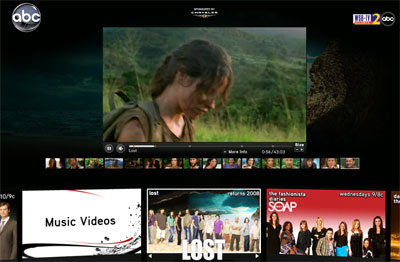
In the early days of streaming media-- the mid-to-late 1990s-- watching videos and listening to music online wasn't constantly enjoyable. It was a little like driving in stop-and-go traffic during a heavy rain. If you had a slow computer or a dial-up Web connection, you might spend more time looking at the word "buffering" on a status bar than seeing videos or listening to tunes. On top of that, whatever was choppy, pixilated and difficult to see.
Streaming video and audio have come a long way ever since. According to Bridge Rankings, 57 million individuals listen to Web radio weekly. In 2006, people viewed more than a million streaming videos a day on YouTube [source: Reuters] The same year, television network ABC began streaming its most popular TELEVISION programs over the Web. People who missed an episode of shows like "Lost" or "Grey's Anatomy" might capture up on the whole thing online-- lawfully and free of charge.
The success of streaming media is pretty recent, however the concept behind it has been around as long as people have. When somebody talks to you, information takes a trip towards you in the form of a sound wave. Your ears and brain translate this details, permitting you to comprehend it. This is also what takes place when you see TELEVISION or listen to the radio. Info travels to an electronic device in the type of a cable television signal, a satellite signal or radio waves. The gadget decodes and displays the signal.
In streaming video and audio, the taking a trip information is a stream of data from a server. The decoder is a stand-alone player or a plugin that works as part of a Web internet browser. The server, information stream and decoder collaborate to let individuals watch live or prerecorded broadcasts.
In this short article, we'll explore what it requires to create this stream of ones and nos in addition to how it differs from the data in a normal download. We'll also take a look at how to make great streaming media files.
Contents
Finding and Playing Streaming Video and Audio
A video for "" The Mesopotamians" "by They Might Be Giants plays in an embedded Flash player at stereogum.com. A video for "The Mesopotamians" by They Might Be Giants plays in an embedded Flash player at stereogum.com. f you have a connection to the Web and you desire to discover streaming video and audio files, you shouldn't have to look far. Sound and video have actually become a typical part of websites all over the Web, and the procedure of using these files is pretty user-friendly. You discover something you wish to enjoy or hear-- you click it, and it plays. Unless you're seeing a live feed or a webcast, you can often stop briefly, back up and move on through the file, much like you could if you were watching a DVD or listening to a CD.

But if you've never utilized streaming media, your computer may require a little assistance to decipher and play the file. You'll need a plugin for your Web internet browser or a stand-alone player. Most of the time, the Websites you have actually visited points you in the ideal instructions. It triggers you to download a specific player or reveals you a list of choices.
These players translate and show data, and they generally recover information a little faster than they play it. This additional info remains in a buffer in case the stream falls behind. There are 4 primary players, and every one supports specific streaming file formats:
QuickTime, from Apple, plays files that end in.mov.
RealNetworks RealMedia plays.rm click here files.
Microsoft Windows Media can play a few streaming file types: Windows Media Audio (. wma), Windows Media Video (. wmv) and Advanced Streaming Format (. asf).
The Adobe Flash gamer plays.flv files. It can also play.swf animation files.
For the most part, these gamers can't decipher one another's file formats. For this reason, some sites use great deals of different file types. These sites will ask you to pick your preferred gamer or choose one for you automatically.
The QuickTime, RealMedia and Windows Media gamers can work as stand-alone players with their own menu bars and controls. They can also work as internet browser plugins, which are like mini variations of the full-scale gamer. In plugin mode, these players can look like an integrated part of a Websites or pop-up window.
Flash video is a bit different. It normally requires a Flash applet, which is a program created to decipher and play streaming Flash files. Programmers can compose their own Flash applets and personalize them to fit the needs of a particular Web page. Flash is ending up being a more popular choice for playing streaming video. It's what YouTube, Google Video and the New York Times all utilize to display videos on their websites. The video below, which demonstrates what would occur if you shot your TV, plays in a Flash applet. No matter whether it's an applet or a completely functional gamer, the program playing the streaming file discards the information as you view. A complete copy of the file never ever exists on your computer, so you can't conserve it for later. This is various from progressive downloads, which download part of a file to your computer system, then allow you to see the rest as the download finishes. Due to the fact that it looks so much like streaming media, progressive downloading is likewise understood as pseudo-streaming. These players and applets do what lots of applications do-- they play files. We'll look at these files and how they take a trip to your computer in the next area.